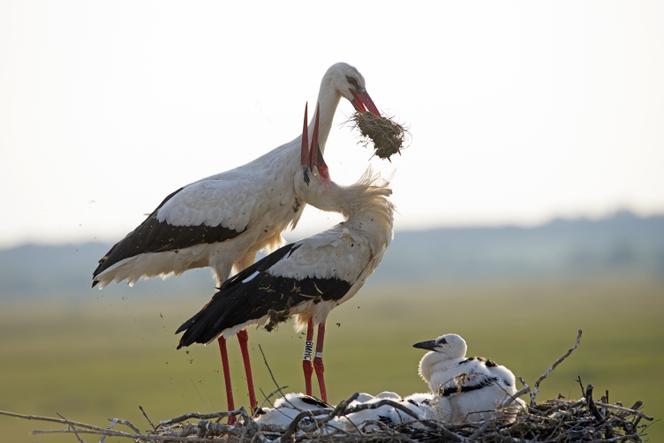


If you don't like storks, raise your hand! Dare to say that you aren't touched by the majesty of their flight, that you aren't amazed by the incongruity of their immense nests, that you remain impervious to the many legends associated with these eternal bearers of good news. And let's not forget Jean de La Fontaine: all his fans have a jubilant memory of the fox stymied by the "long-necked, narrow-mouthed" vase presented to him by the bird.
Andrea Flack's team at the Max Planck Institute never ceases to marvel at these graceful birds. For years, researchers have been trying to track their flight patterns, first in autumn when they leave Europe for Africa, then in spring when they take the return route before mating season. But when and especially where do storks fly? How do they learn the best routes? "Migration research usually asserts that routes are either innate, inherited genetically, or acquired from other birds of the same species," said the German researcher. In an article published on March 4 in the American Proceedings of the National Academy of Sciences (PNAS), however, Flack and her colleagues have just shown that an essential element was missing: storks also learn from their own experience, improving their routes from year to year.
Demonstrating this may seem easy enough. Equipping birds of this size with tracking devices to record their position and wing beats – in other words, their energy expenditure – presents no insurmountable technical difficulty. But their first journey, which they begin alone at 8 weeks of age, is one of danger: seventy-five percent of young storks die in their first year. To study migratory learning, it is therefore necessary to equip a very large number of juveniles. Researchers at the Max Planck Institute set out to do just that, at five breeding sites in southern Germany and Austria. In the process, they accumulated an unprecedented mass of data, tracking 40 individuals over several consecutive years, between 2013 and 2020.
The results were spectacular. In their first year, juveniles explore. They fly with the wind. Their priority is to minimize their energy expenditure, even if it means lengthening the distance and time they need to fly. But from the following year, the birds begin to reduce their migration time. "They seem to use the spatial memory they have acquired to innovate and take shortcuts," says Ellen Aikens, the first author of the aforementioned study, now a researcher at the University of Wyoming.
You have 29.47% of this article left to read. The rest is for subscribers only.
